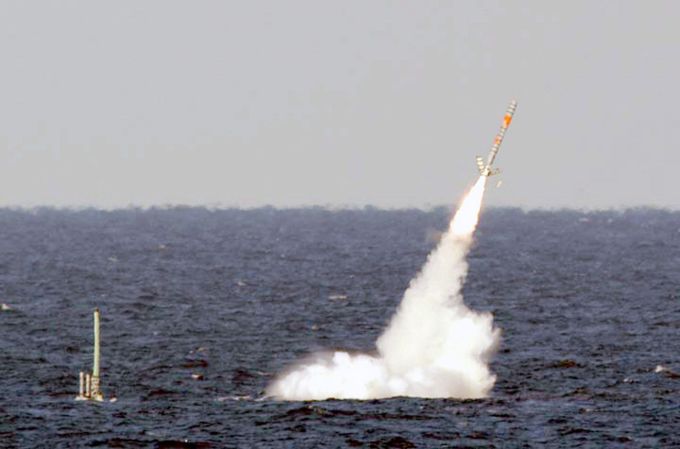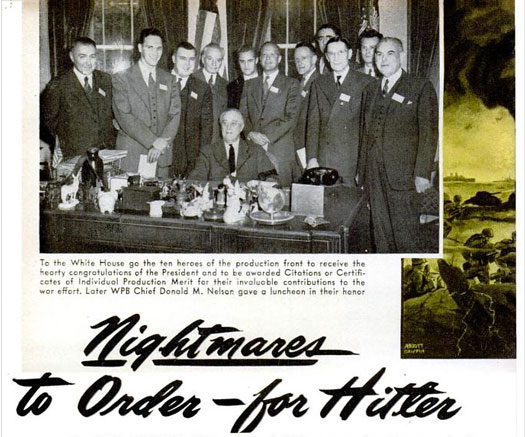

From the book ALPHA: Eddie Gallagher and the War for the Soul of the Navy SEALs by David Philipps. Copyright © 2021 by David Philipps. Published by Crown, an imprint of Random House, a division of Penguin Random House LLC. All rights reserved.
The Navy SEAL Teams were created in 1962 by President John F. Kennedy, who as a commander of a small patrol torpedo boat in World War II had seen the outsized value of small units in big fights and understood, as one early SEAL put it, “that a well-trained David can kick Goliath in the balls.” SEAL stood for “Sea, Air, and Land” and represented all the capabilities of the new force. The Navy wanted commando troops able to strike underwater, on the beaches, or from the air. They wanted small, independent teams smart and flexible enough to blow up bridges, cut communication lines, train resistance fighters, and assassinate foreign targets, then slip away unnoticed. They needed to be able to adapt and react with almost no oversight as conditions changed, so the Navy gave them a level of independence unheard of in the rest of the force. In the Navy’s fleet of ship drivers and jet pilots, there was only one group that seemed suited for such a dangerous and physically demanding mission: the UDTs, or Underwater Demolition Teams—the original Navy frogmen.
Twenty years earlier, at the onset of World War II, the American military realized that defeating the Nazis and the Japanese would depend on making a series of successful amphibious invasions, but many of the critical landing beaches bristled with mines and massive iron obstacles scattered on the sand like jacks to keep Allied ships from hitting shore. Other beaches, especially in the Pacific, were guarded by coral reefs.
The Allies learned early that they could have the best ships and the best troops, but if they couldn’t land and seize critical ground, they had nothing. In one early battle in the Pacific, on the island of Tarawa, Marines trying to land hit an unseen reef hundreds of yards from shore. Under withering fire, men laden with heavy equipment jumped into the water. Some immediately sank and drowned, others were mowed down by Japanese machine guns as they tried to wade in. More than a thousand Marines were killed trying to take the tiny island, another two thousand were wounded.
In desperation, the Navy created the Underwater Demolition Teams. The UDTs’ mission was to swim silently to beaches before amphibious landings, chart the depths, defuse mines, and blow up obstacles by hand to clear the way. The work was basic but harrowing. Sailors had to swim hundreds of yards to shore, often under fire, using only primitive swim fins and masks. They worked with simple plumb lines and slates for recording depths and satchels full of explosives for destroying obstacles. The frogman’s weapon of choice— his only weapon—was a fixed-blade knife. It was the only thing a diver could carry, and it was guaranteed never to jam or misfire. It became a symbol of the Teams. To this day, as a reminder of the frogman heritage, every new SEAL is given a ceremonial version of the same fixed-blade Navy knife that the frogmen carried.
With World War II going full steam, the Navy didn’t have time to train explosives experts, so it rounded up anyone with workable civilian experience: hard rock miners, roughnecks, and demolition crews. Then UDT leaders put them through a punishing physical gauntlet of running and swimming. The idea wasn’t so much to train men to do a job but to strip away those who didn’t have the right stuff. If the Navy could find the men who wouldn’t quit despite cold, exhaustion, pain, and psychological punishment, then it had found men who would not question an order to leave the safe, armored hull of a destroyer and slip alone, nearly naked, into the dark sea to swim toward an enemy island armed only with a knife.
Often the frogmen had to swim to the beaches while the Navy was bombarding the shore and the enemy was firing back. Casualties could be high. During the D-Day invasion of France, UDT swimmers were the first ashore on Omaha Beach. Swimming through waters choppy with machine gun fire, they dashed onto the sand to clear the way for the first landing craft. With no cover, they were shot to pieces. The casualty rate for the frogmen that day was fifty-two percent.

The men who volunteered for that kind of work were like nothing the Navy had ever seen. Over centuries the Navy had developed a culture of white-tablecloth order and discipline that had changed little since the time of British frigates. A ship captain acted as lord and commander. A strict hierarchy of officers and sailors ensured that the many specialized operations of a ship ran smoothly. The frogmen were a different breed. They had been formed from civilian workmen in New Deal 1940s America, and they embraced the era’s informal attitudes of blue-collar solidarity and equality.
They operated in small teams—usually just a half dozen men in a rubber boat. There was little distinction made between officers and enlisted sailors. They all endured the same training, ate the same chow, slept in the same bunks. During missions, they all jumped into the same dark water where, as the early frogmen noted, there was no place on their bare shoulders for rank or epaulets. Low-level enlisted men and officers all routinely used only first names.
For generations the military ground forces have insisted on discipline and attention to detail. Haircuts, uniform standards, exact marching, and crisp salutes were all part of a tradition of obedience hammered into every activity to keep troops in line when the shooting started. The frogmen, with their New Deal culture, had little use for any of it. After all, they were not an attack force, they were a crew of workmen out to do an insane job. They could be as crazy as they wanted.
On ships the Navy and frogman cultures clashed immediately. Sailors were forced to wear uniforms and keep busy in the sticky South Pacific while frogmen lazed about the decks in shorts, smoking and playing cards. One admiral complained in frustration to the officer in charge of the UDTs that he considered the frogmen “the most unruly bunch of Navy men” he had ever seen. The officer reportedly replied, “Yes, sir, but they got the job done.”
The UDT swimmer’s dangerous work gave the low-ranking frogmen a special status in the Navy. They had a swagger that transcended rank because no one in the Navy could succeed without them, and no one in the Navy wanted to trade places. “They considered all of us as crazy as they had ever seen,” said a frogman who had helped clear the beaches on Okinawa in 1945. “They thought the idea of swimming into the beaches almost naked was insane, and they wouldn’t have our jobs for anything.”
That World War II experience created the mold for the frogmen for generations. They were part of the Navy, but not really sailors. The Navy needed them but didn’t necessarily want them. And the frogmen didn’t just accept that rogue outsider status; they wore it like a badge of honor.
[Related: The stealth helicopters used in the 2011 raid on Osama bin Laden are still cloaked in mystery]
When Kennedy ordered the Navy to create the SEALs, the Pentagon naturally looked to the UDTs. Though the SEAL mission was far outside the scope of the Teams’ beach-clearing missions, the frogmen were better suited for the job than anyone else in the Navy. They were tough, fearless, and in great shape. Nearly all of the first SEALs came from the UDTs. And they brought the frogman culture with them. They had the same egalitarian brotherhood of shared burdens and first names. They had the same rough edges and disdain for Navy hierarchy. And they had the same attitude toward military rules and regulations: What may be necessary on a battleship or submarine or even in a traditional infantry battalion wasn’t just a burden for a small squad of crack commandos inventing a whole new type of modern warfare, it was a joke.
The SEALs stressed independence and unconventional thinking, and they had a certain admiration for outsmarting the military bureaucracy. It all fell under a guiding principle they called “being creative.” That principle became institutionalized as old frogmen rose in rank and trained new generations. The philosophy survived Vietnam and the Cold War and was passed down to the modern SEALs fighting in Iraq and Afghanistan. It was embraced at nearly every rank. “In a wartime environment, it is about being creative, and you can be very creative within the rules,” Admiral William McRaven, who led the SEALs during the raid on Osama bin Laden’s compound, said in an interview after he was named one of the four runners-up for Time’s Person of the Year in 2011. “The leadership gives them the opportunity to be creative because they’re specially selected, they’re specially trained, they’re specially equipped.”
Buy ALPHA: Eddie Gallagher and the War for the Soul of the Navy SEALs here.























